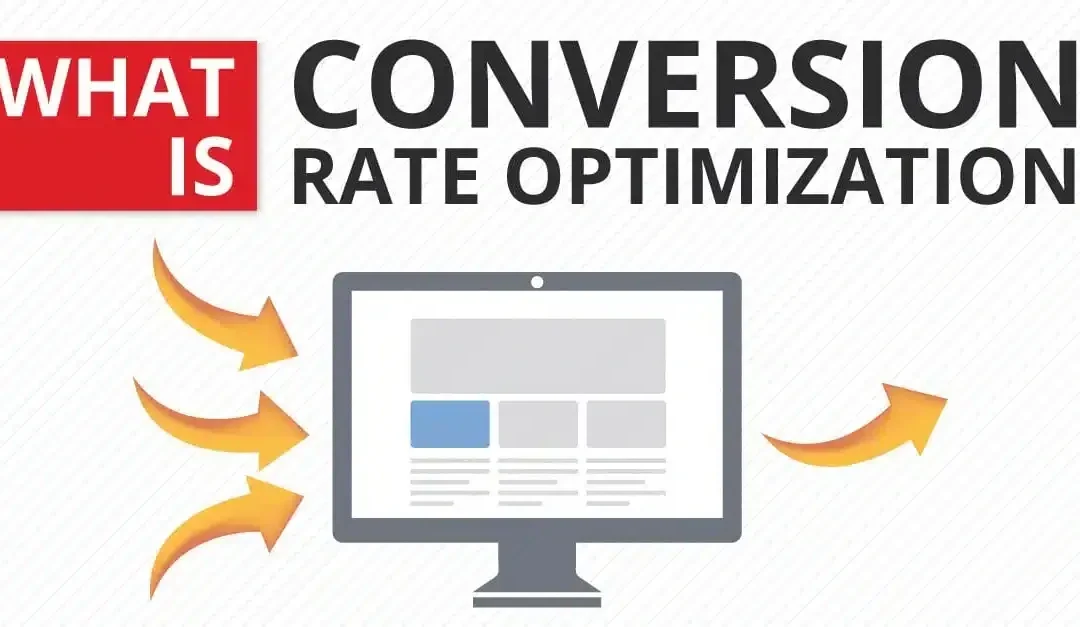You should be doing conversion rate Optimization. According to the Econsultancy report: “Quarterly Digital Intelligence Briefing: Digital Trends for 2013,” conversion rate Optimization topped the marketers priority list for 2013.
But, what is conversion rate optimization, and why should you be doing it?
Conversion Rate Optimization (CRO) is about getting the best return on investment out of your website through making the right choices in design, content, and layout.
To say it simply: Find out why certain visitors aren’t converting, and fix it.
WHY CONVERSION RATE OPTIMIZATION IS CRUCIAL
Because CRO requires input and collaboration from many different specialists, including designers and content creators, it can become a large undertaking. However, the benefits of CRO far outweigh the effort required to do it right.
Below are a few reasons why CRO should be an integral part of your marketing strategy:
-
- Reason #1: It makes use of current visitors. CRO takes advantage of traffic you already have on your site, so there’s no need to gain more visitors for CRO to work. Instead, you’re further capitalizing on money you’ve already invested.
- Reason #2:There is always room to improve. No matter how many visitors you’re converting, there are just as many visitors who might have converted, but didn’t. The CRO process will determine why they might not be converting, and work to fix that.
- Reason #3: Paid advertising is getting more competitive and more costly. Because it’s so expensive, it’s more cost-effective to capitalize on your current visitors rather than try and get more visitors at your current rate (to learn more about paid advertising landing page design, click here).
- Reason #4: CRO improves your product and brand image. The type of content that improves conversions also tends to be engaging, informative, and shareable. Because of that, your product and brand image will improve and expand beyond the visitors of your page.
THE BASICS OF CONVERSION RATE OPTIMIZATION
Put yourself in the place of your visitors and figure out what they want their experience to be like when they visit your site. The basis of CRO is the implementation of that experience.
There are a few major components of your website that can benefit greatly from CRO:
-
- Call-to-Action. Make it clear and easy to locate. Don’t be afraid to tell your visitor exactly what you want them to do – this is not the place for flowery language.

What gets your visitor to complete the action you want them to?
- Graphics. Position and size your images to complement your content and call-to-action, not overpower them. A great way to do this is by making the person or object in your image look at or face toward your content.
- Usability. Ensure your visitors and users are able to easily navigate around your site. Make your content and call-to-action the main focus of the page, and keep things that take them away from their current page to a minimum.
- Search Engine Accuracy. Be sure that your titles, Meta descriptions, keywords are all up-to-date and relevant. In other words, make it as easy as possible for your visitors to find you so you don’t have to find them.
- Trust & Security. People visiting your site need to know they have landed on a page they can feel secure about and ultimately trust. Having great design and well-researched content is the best way to gain trust. Additionally, you can add trust symbols such as certifications and privacy policies. For more on website trustworthiness, click here.
For more on designing websites for conversions, click here.
WAYS TO IMPROVE YOUR CRO PROCESS
Conversion rate optimization is meant to be performed indefinitely – as the needs and tastes of visitors change, so should your website design and content.

Your target audience thrives on great content.
Because of this, having a set process for conversion rate optimization will make the task easier and more effective with each iteration of your website.
Consider these strategies for your CRO process:
-
- Have a content marketing plan. Visitors are looking for informative, engaging, and relevant content. Creating this content requires good writers and planning. Research what resonates with your visitors and keep your content fresh to entice them to share it with others.
Learn more about great content marketing here.
- Maintain consistency and relevance between your ads and landing pages. Your landing pages should continue the same benefits and call-to-action of your ads. CRO is a piece of your marketing strategy and the tactics you implement for CRO should fit into the overall goal of your marketing.
- A/B Test. Because CRO is ongoing, you need to know what elements of a page are responsive and which aren’t. By testing a new page that has only one element changed – for example, the call-to-action – and comparing it to the old version, you can determine which piece of your page caused the increase in conversions.
To learn more about the intricacies of A/B testing, click here.
MAKE USE OF YOUR CURRENT VISITORS
Implementation of a good CRO plan will likely result in an increase of conversions without a correlating increase in traffic. Because there’s no need to gain more visitors, CRO is often a very cost-effective way to quickly improve your conversion rate.
Many visitors are potential conversions, but a potential conversion doesn’t improve your ROI. With CRO, you can turn those visitors into conversions without the extra effort of getting them to your website.
“A website without conversion rate optimization is like a car without wheels, it takes you nowhere.” – Author Unknown
